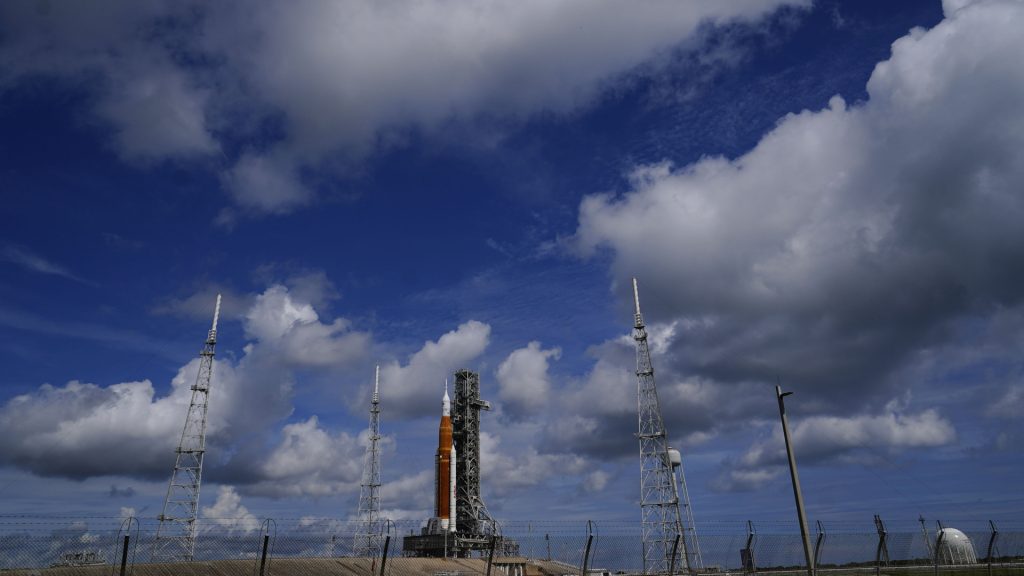Status: 08/28/2022 7:44 PM
On Monday, NASA wants to send a rocket to the moon with “Artemis 1” for the first time in nearly 50 years. It could fuel American spaceflights into deep space — but what if the mission fails?
There’s no shortage of superlatives in this mission: the world’s most powerful rocket, the furthest flight humans have ever taken, and the longest time a space capsule can stay in space without docking. In tests, NASA has proven it’s ready to return to the Moon – but on Monday it should show that what was designed and built will work in the harsh realities of space.
At about 2:30 PM German time, a two-hour start window opens. Then a carrier rocket designed specifically for this mission called the Space Launch System, or SLS for short, must take off and carry the Orion space capsule, located at the top, into space.
Is the heat shield durable?
The spacecraft is scheduled to fly to the Moon in about two weeks, orbit it several times for about two weeks, and finally return to Earth and land in the Pacific Ocean on October 10. The mission is scheduled to take 42 days.
NASA doesn’t just want to test whether the rocket can be successfully launched and successfully brought the spacecraft to the moon. The last part is especially important: Will the Orion capsule return safely? Does the heat shield withstand when it enters the Earth’s atmosphere? Because people should already be sitting in the Orion capsule for the next mission.
With “Artemis 2” in 2024 for the first time since 1972, astronauts are once again in lunar orbit. With ‘Artemis 3’ people should set foot on the moon again as soon as possible in 2025 – among them the first woman and the first person of color. Twelve people have walked on the moon so far. All Americans, they are all white males.
Journey from the Moon to Mars
And Americans don’t just want to go back to the moon – they call the Artemis program their “moon to Mars mission.” Together with European and other partners, a permanently lunar orbiting space station is already being built within a few years. “Gateway” is the name of the project and it’s a kind of ISS, just smaller. The space shuttles should be able to dock there and the crews should be able to stop on their way to the moon.
The “gate” should also be a stop on the US route to Mars. The spacecraft bound for Mars can be tested here, relatively close to Earth, before being sent deeper into space. Since the gravity of the Moon is much less than that of the Earth – you can escape from it more easily. The effects of cosmic radiation on the human body should also be researched in more detail here before people are sent to Mars. Mars is expected to be in the late 30s or early 40s at the earliest. The goal: to be faster than China.
Controversial mission
The mission of “Artemis” is not undisputed. In particular, the development of the launch vehicle was delayed several times, and costs exploded. In total, the cost of the mission is estimated at $93 billion by 2025. According to NASA, the cost of launching the Artemis rocket is $4.1 billion. And this alone explains the following: the start of “Artemis 1” should not go wrong under any circumstances.
If successful, it could fuel American spaceflights into deep space — if it fails, it could mean the end of NASA’s ambitions for a long time. It follows that NASA will not risk anything. If any problems arise before the announced start on Monday at 2:33 pm German time or if the weather does not cooperate, the start will be postponed. Other possible starting days are September 2 and 5.
On the other hand, NASA is preparing for a really big train station for Monday. US Vice President Kamala Harris will arrive to deliver a speech. Herbie Hancock will play the national anthem and star cellist Yo-Yo Ma will perform “America the Beautiful” with the Philadelphia Orchestra.
So far, everything is going according to plan, according to NASA. But in the end she will take caution before speed. Because there’s one thing you can’t stand: Not everything works when you start.

“Total coffee aficionado. Travel buff. Music ninja. Bacon nerd. Beeraholic.”









More Stories
Coral Seeding: Artificial Insemination Makes Coral More Heat Tolerant
Fear, Anger, and Denial: How People Respond to Climate Change – Research
LKH Graz: Using radiation to combat heart arrhythmias